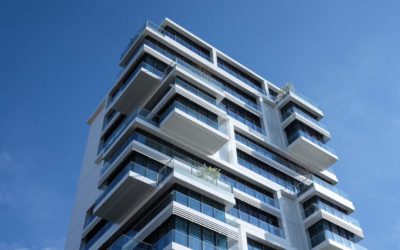What is a Net Lease?

“What is a net lease and why do I care as a Passive Commercial Real Estate investor?”
As I encounter various office building investment opportunities, I see the term “Net Lease” often. As this term is not used in many other commercial real estate asset classes, I thought it may be good to share with the community what this means, the various types of “Net Leases” and more importantly how they affect the financial operating performance of the asset.
Net Lease Defined
When a tenant signs a lease and they are responsible for only paying the rent, this is considered a “Gross Lease”. A Net Lease is a commercial real estate lease where the tenant not only pays for their rental space, but they also pay one or more additional expenses as it relates to overall building operations. Those additional expenses are related to the operation, maintenance, and usage of the property that a landlord would typically pay.
There are four types of Net leases and they cover three categories of property expenses such as property taxes, general building maintenance, and insurance fees.
Four main types of Net Leases
- Single Net Lease: Tenants who sign a single net lease pays one of the three expense categories as well as their rent.
- Double Net Lease: Tenants who sign a double net lease pay two of the three expense categories including their rent.
- Triple Net Lease: Tenants who sign a triple net lease pays all three expense categories. Triple net leases are usually whole building leases with a single tenant for the long-term – usually 10 years or more.
- Absolute Net Lease: In an Absolute Net Lease, the tenant not only pays all three expense categories, but they also pay for all roofing and building structure repairs. This lease agreement completely relieves the property owner or investor of the building’s operational financial obligations.
A point to know is that the tenant pays those additional costs to the landlord and the landlord subsequently makes the payments to the appropriate entities.
Why is this important to the Passive Real Estate Investor?
In a simple statement, it’s about limiting or moving the building’s operational financial responsibilities from the asset owner (investor) onto the tenant. By engaging in this type of lease structure, the owner will lower the rental cost initially but will still have yearly rent increases factored into the lease. In this model, rental revenues go up while various aspects of operational expense (depending on Net Lease terms) stay the same thus increasing overall profitability.
The thing I like about office building investments that are based on Triple Net or Absolute Net leases is the asset’s proforma is much simpler to understand and while operating expenses still exist, they don’t affect the asset’s Net Operating Income or profitability… and to a large degree, it reduces overall financial performance risk as unforeseen building operational expenses that affect the building’s profitability are paid for by the tenants.
If you are considering a passive investment in an office building, make sure you understand the tenant’s lease terms.
Cheers,
Paul
CEO Investors Country Club
Join Our Community!
Submit a simple application and get access to new investment opportunities, education, and a community of like-minded investors.
Other Resources
The Passive Real Estate Investor
When we hear the term “Passive Investor”, most people may think "passive" means that you don't have to do anything once you invest in a commercial real estate asset (or business). The perspective may be to just make an investment and then forget about it. Well it’s...
How Commercial Real Estate Investments Make you Money
When we invest our money in the stock market, we usually expect to make a return based on a couple of vehicles - stock price appreciation and potentially a dividend based on the number of shares you own (many companies don’t offer a dividend). When we invest in...


